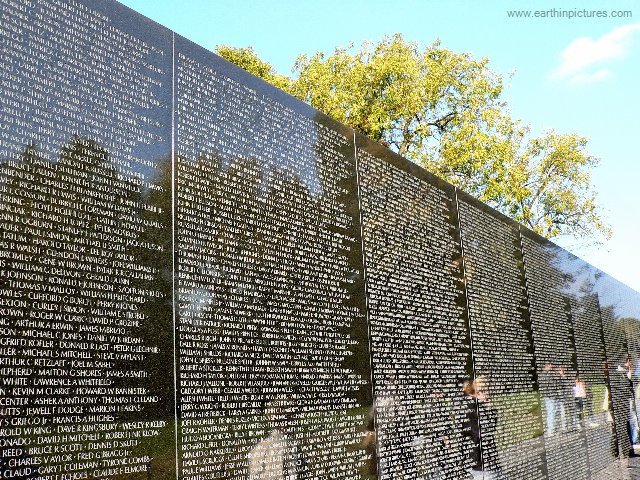The Vietnam in Me
The Vietnam In Me: Multiple Truths in the Life of Tim O’Brien
“The Vietnam in Me.” New York Times Magazine, October 2, 1994.
Comment:Tim O’Brien has explained multiple times throughout the novel that everything he writes is absolute fiction, even though it may be inspired by actual events, but maintains a special term which is classified story truth (in the sense that it’s true that it is a story and may have happened). He also uses the term happening-truth, which is what is actually occurring in reality. These two clash with the release of the short story “Field Trip” and the article “The Vietnam In Me”, both about his return to Vietnam.
The first, “Field Trip”, is a prime example of story truth, where O’Brien speaks about how he and his daughter return to Vietnam and he goes to the field where Norman Bowker let go of Kiowa and O’Brien wades in and buries Kiowa’s moccasins at the spot where he went under. He then has a heart-to-heart conversation with his daughter on the nature of the Vietnam War and gives a great deal of polished-over romanticism on loss and grief and duty (almost as if you combined Nathaniel Hawthorne, Keanu Reeves, and Tom Clancy for a made-for-TV movie).
Meanwhile, “The Vietnam In Me” is the realistic, factual account
 of
O’Brien’s return to Vietnam, with a female friend (not his daughter),
and his return to his own personal killing fields (apologies for the
incorrect placement of that term, seeing as killing fields were in
Cambodia and not Vietnam). In this account, it’s as though O’Brien
allowed Larry Clark to follow him around with a camera and detail
everything on his journey through ‘Nam. From visiting the minefields
that took the lives of his friends with former VC and NVA officers, to
the village of My Lai where American militarism truly failed in 1968,
and even to stuffy, hot Ho Chi Minh City (Saigon) hotels where he
battles his own personal demons on the “terrible things” he did during
the war, though not giving any evidence as to what those things were.
The article even takes a turn for the even darker with his constant
contemplation of suicide after his female friend leaves him. While this
article is much more gritty than the short story, one thing remains the
same: his feelings. Throughout both pieces, he cannot escape this
insufferable sadness and guilt over the unknown.
of
O’Brien’s return to Vietnam, with a female friend (not his daughter),
and his return to his own personal killing fields (apologies for the
incorrect placement of that term, seeing as killing fields were in
Cambodia and not Vietnam). In this account, it’s as though O’Brien
allowed Larry Clark to follow him around with a camera and detail
everything on his journey through ‘Nam. From visiting the minefields
that took the lives of his friends with former VC and NVA officers, to
the village of My Lai where American militarism truly failed in 1968,
and even to stuffy, hot Ho Chi Minh City (Saigon) hotels where he
battles his own personal demons on the “terrible things” he did during
the war, though not giving any evidence as to what those things were.
The article even takes a turn for the even darker with his constant
contemplation of suicide after his female friend leaves him. While this
article is much more gritty than the short story, one thing remains the
same: his feelings. Throughout both pieces, he cannot escape this
insufferable sadness and guilt over the unknown.“The Vietnam In Me” is more true because O’Brien says that truth is in the gut and this is where O’Brien’s gut is. Based off his writing style alone, one can just literally feel the emotions sweep off the page and hit him or her right in the chest while with “Field Trip”, it’s as if one can almost see the time it took in calculating the perfect emotions and perfect snippets of dialogue for each character from the uncertaintity as to what to say at Kiowa’s death spot to him telling his daughter that the Vietnamese was not angry at him because “all that’s over now”. Almost cliche even though it works wonderfully with the rest of the book
 . One shouldn’t get upset about the fact that one story is
based on fact and the other is based in fiction; it is one’s personal
choice to like or dislike whatever they read. And the question of
getting upset brings up another question of whether it would be better
to stick to the truth or to emotional fiction, and once again, it is
whatever one wants. Personally, I would like truth with emotions clearly
portrayed so not only do I know what actually happened, but I also
know what the people were feeling at the time.
. One shouldn’t get upset about the fact that one story is
based on fact and the other is based in fiction; it is one’s personal
choice to like or dislike whatever they read. And the question of
getting upset brings up another question of whether it would be better
to stick to the truth or to emotional fiction, and once again, it is
whatever one wants. Personally, I would like truth with emotions clearly
portrayed so not only do I know what actually happened, but I also
know what the people were feeling at the time.
